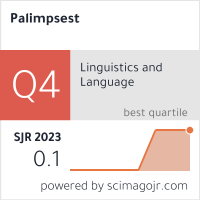THE ROLE OF CONJUCTION IN THE COHESION OF ABSTRACTS WRITTEN IN ENGLISH AND SERBIAN
DOI:
https://doi.org/10.46763/PALIM23815039mAbstract
Cohesive devices are used to form ties between adjacent parts of the text. Owing to the short form of abstracts, particular parts of their structure can be highlighted using conjuncts as cohesive elements. Therefore, the purpose of this article is to study what kind of conjuncts are used by authors from different disciplines, aiming to determine the most common forms and functions as well as their place in the rhetorical macrostructure of the abstract. The corpus consists of 100 abstracts published in journals, namely 25 social science and 25 mechanical engineering abstracts in English and Serbian. Overall, the English authors guide their readers more often through the text by using conjuncts in comparison with their colleagues writing in Serbian. Additive conjuncts prevail in both parts of the English corpus, signifying a range of specific meanings. Whereas adversatives in the social science abstracts in English mainly serve to identify a research niche, in the engineering abstracts these forms are present in methodology, the same as temporal conjuncts. Considering the structural realization of causatives, English examples include mostly single-word adverbials, while almost all of these forms in Serbian are prepositional phrases with referential elements pointing backwards to the previous text. These results are relevant given the fact English is the medium of international and regional academic publications. This is why cultural and discipline specific aspects of writing should be taken into account and integrated into teaching and learning at universities.
Keywords: cohesion; conjunction; academic writing; rhetorical macrostructure; abstract.


